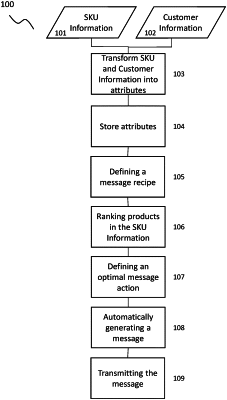| CPC G06Q 30/0631 (2013.01) [G06F 18/214 (2023.01); G06N 3/08 (2013.01); G06Q 30/0283 (2013.01); G06Q 30/0633 (2013.01)] | 34 Claims |

|
1. A computer-implemented method comprising:
collecting history information, wherein the history information comprises one or more episodes from one or more customers, wherein each episode comprises one or more items of a collection of items;
transforming the history information into standardized attribute information comprising one or more attributes comprising a matrix of observed substitutions, wherein an observed substitution comprises an alternative item;
training a neural network on the matrix of observed substitutions to generate item embeddings receiving input comprising an item, wherein the neural network comprises a loss function for optimizing a machine learning algorithm;
identifying a substitution similarity between the item and another item based on the item embeddings;
automatically generating a message comprising at least one item of the collection of items based on a subset of the one or more attributes; and
transmitting the message to the one or more customers over a network;
wherein automatically generating a message based on the subset of the one or more attributes further comprises:
defining a message recipe based on the subset of the one or more attributes;
ranking the collection of items based on a subset of the one or more attributes;
defining a message action based on the message recipe and a message template; and
automatically generating the message comprising the message action and the at least one item of the collection of items based on the ranking.
|